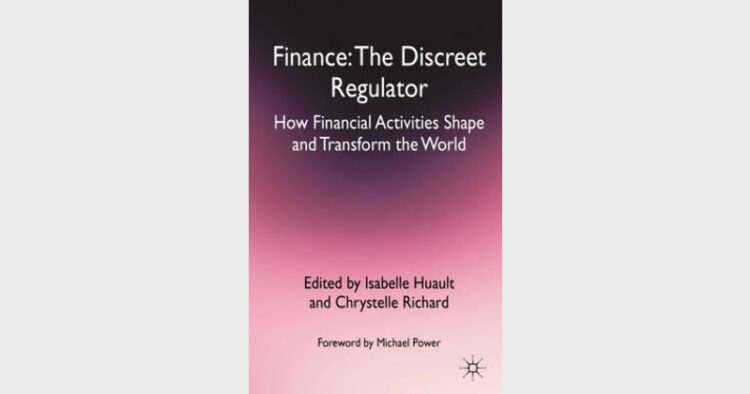Jayant Patel
Finance: The Discreet Regulator: How Financial Activities Shape and Transform the World, Isabella Huault & Chrystelle Richard, Palgrave Macmillan, Pp 288, $ 100
THE present age has been described as one of “regulatory capitalism” and its manifestation is the expansion in the number and range of regulatory agencies. This has been a direct offshoot of the global financial crisis that began in 2007 and accelerated in September 2008 by the collapse of Lehman Brothers, making one question on the damaging role of large banks with no geographical limits. The prime objective of the book is to show how financial activities shape and transform the world.
At a time when regulation of the financial sector is the talk of the global village, this volume argues that organisations in the financial industry are a powerful “rule-making engine” (as stated by Zald and Lounsbury in their paper) and are themselves discreet regulators of the markets in which they function. Based on a series of case studies related to the construction and structure of financial markets or the emergence of new arrangements, the book shows that financial markets are the seat of regulatory processes initiated and developed by core-capitalist financial institutions, such as banks and audit firms. It emphasises the growing role of finance, financial markets and shareholder-concepts of value as “key drivers of capitalism”. It brings out the fact that actors that appear to be the objects of regulation, or at least do intervene only at its fringes, are in fact “discreet regulators”, supplying the institutional framework that fosters market creation and globalisation.
The concept of “discreet regulation” forms the backbone around which the chapters of this volume are organised.
Part I focuses on the actors themselves acting as networks of influence and their characteristics. Part II highlights the tension between the state and the market and the different kinds of joint regulation empirically identified. Finally, Part III examines the concrete processes of rule-making.
To discuss the chapters threadbare, one finds that Chapters 1 to 4 of Part I present the four types of actors that relay the power of finance in addition to the major investment banks. In Chapter 1, Morales and Pezet seek to advance the understanding of how the notion of financialisation materialises and operates in a concrete organisation. Rather than focusing on the role of financial markets, they analyse how financial rationales are mobilised, enacted and appropriated in a firm. In Chapter 2, Ramirez studies the role played by the group of multinational audit firms, known as the Big Four (Deloitte, KPMG, PricewaterhouseCoopers and Ernst & Young) in the implementation of an international system of standards for accounting and auditing. In Chapter 3, Leuglet analyses the daily routines unfolding in financial firms and markets besides documenting how compliance officers interpret regulatory texts, how they manage ambiguities and how they use written devices to spread regulation through practices, thus contributing to the actual design of markets. In Chapter 4, Taupin examines perpetuation of the regulatory order by the stakeholders of the credit rating industry by analysing various comments collected during the public consultations held by the Securities and Exchange Commission (SEC) in the 2000s to describe the proposed regulation of the credit rating industry.
The other chapters turn to the relationship between the state and the market regarding financial regulation. In Part III, the various papers explore the process of rule-making, arguing that financial actors produce rules, standards and norms with reference to the production of ideas and the construction of legitimacy and to the way the main players tackle ambiguities.
In short, the objective of the book is to explain how society is in fact jointly regulated by public authorities and private actors and to explore how the joint regulation is dominated by financial actors.
(Palgrave Macmillan, Basingstoke, Hampshire, RG21 6XS; www.palgrave.com)














Comments